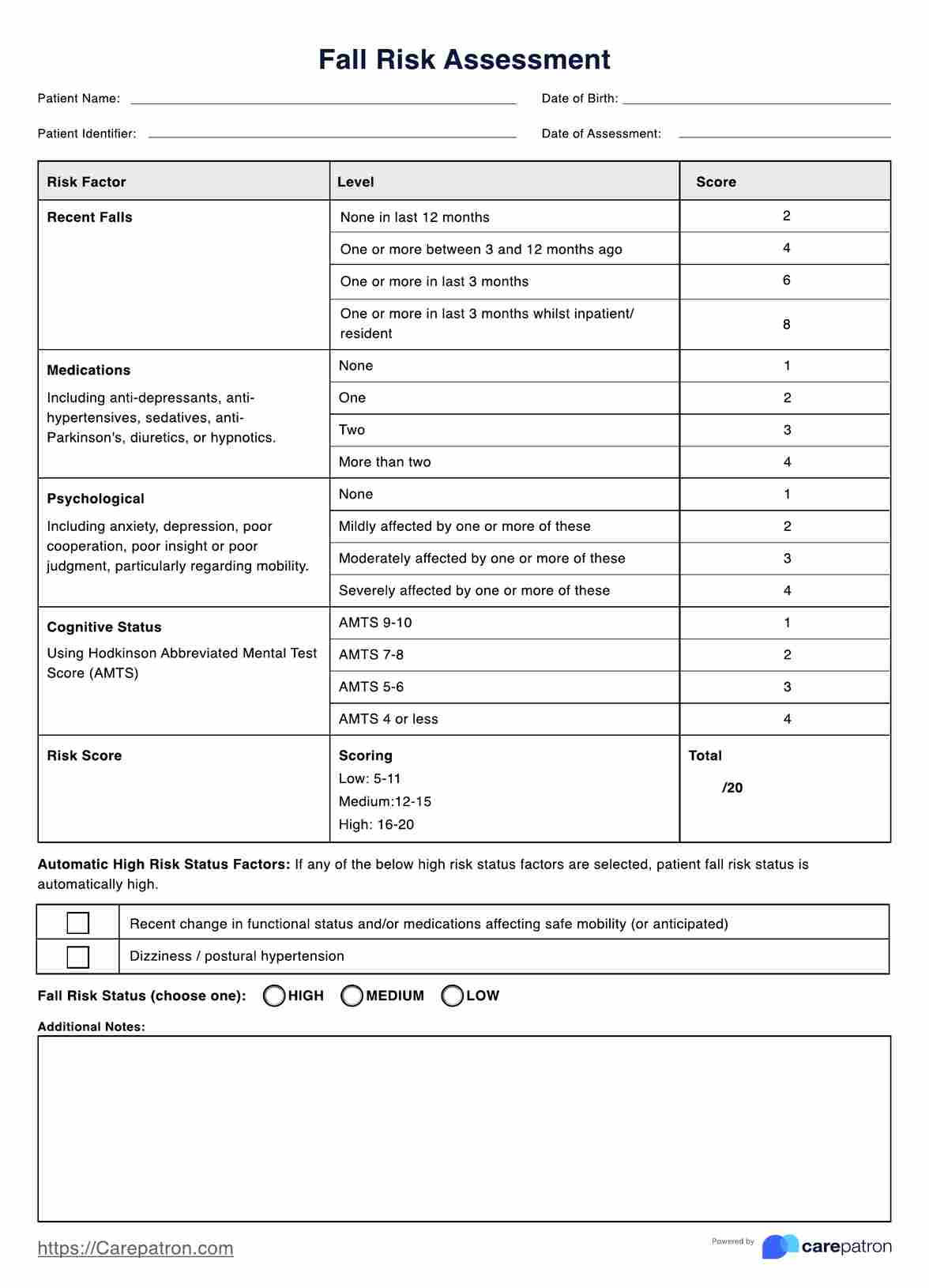Not known Facts About Dementia Fall Risk
Dementia Fall Risk Things To Know Before You Buy
Table of ContentsDementia Fall Risk Can Be Fun For AnyoneIndicators on Dementia Fall Risk You Should KnowDementia Fall Risk Fundamentals ExplainedFascination About Dementia Fall Risk
An autumn risk evaluation checks to see just how likely it is that you will certainly drop. The evaluation usually consists of: This consists of a collection of questions regarding your total wellness and if you've had previous falls or problems with balance, standing, and/or walking.STEADI consists of testing, analyzing, and treatment. Interventions are recommendations that may lower your threat of falling. STEADI includes 3 steps: you for your danger of succumbing to your threat factors that can be boosted to attempt to stop falls (as an example, balance problems, damaged vision) to decrease your risk of dropping by using efficient methods (as an example, offering education and learning and resources), you may be asked numerous inquiries including: Have you fallen in the past year? Do you really feel unstable when standing or walking? Are you bothered with falling?, your provider will certainly check your stamina, equilibrium, and stride, making use of the following fall analysis devices: This examination checks your gait.
After that you'll take a seat again. Your company will certainly examine how much time it takes you to do this. If it takes you 12 secs or more, it might imply you go to higher danger for a fall. This examination checks strength and balance. You'll being in a chair with your arms crossed over your breast.
Move one foot midway forward, so the instep is touching the large toe of your other foot. Move one foot fully in front of the various other, so the toes are touching the heel of your other foot.
4 Simple Techniques For Dementia Fall Risk
A lot of drops occur as an outcome of several contributing variables; as a result, handling the risk of dropping starts with determining the factors that add to fall danger - Dementia Fall Risk. Several of the most pertinent threat variables include: History of previous fallsChronic clinical conditionsAcute illnessImpaired stride and balance, reduced extremity weaknessCognitive impairmentChanges in visionCertain high-risk medications and polypharmacyEnvironmental factors can additionally raise the threat for falls, including: Poor lightingUneven or harmed flooringWet or slippery floorsMissing or harmed hand rails and order barsDamaged or poorly equipped devices, such as beds, mobility devices, or walkersImproper usage of assistive devicesInadequate guidance of individuals residing in the NF, consisting of those who exhibit hostile behaviorsA effective loss threat monitoring program calls for an extensive professional analysis, with input from all members of the interdisciplinary team

The care strategy should additionally consist of interventions that are system-based, such as those that advertise a secure atmosphere (suitable lights, handrails, order bars, etc). The effectiveness of the treatments ought try these out to be evaluated occasionally, and the treatment plan modified as necessary to mirror modifications in the loss threat assessment. Implementing a loss danger management system using evidence-based ideal technique can lower the occurrence of drops in the NF, while limiting the capacity for fall-related injuries.
The Single Strategy To Use For Dementia Fall Risk
The AGS/BGS guideline recommends screening all adults matured 65 years and older for loss threat annually. This screening is composed of asking people whether they have actually dropped 2 or even more times in the previous year or sought clinical attention for a loss, or, if they have actually not dropped, whether they really feel unsteady when walking.
People who have actually dropped when without injury needs to have their equilibrium and gait assessed; those with gait or equilibrium problems need to obtain added analysis. A background of 1 autumn without injury and without stride or balance issues does not call for additional evaluation past continued yearly loss danger testing. Dementia Fall Risk. An autumn danger evaluation is required as part of the Welcome to Medicare evaluation

Everything about Dementia Fall Risk
Recording a falls background is one of the top quality signs for loss prevention and administration. A vital component of risk analysis is a medication testimonial. Several courses of medicines raise autumn risk (Table 2). copyright medications specifically are independent forecasters of falls. These medicines tend to be sedating, change the sensorium, and impair equilibrium and gait.
Postural hypotension can often be reduced by minimizing the dosage of blood pressurelowering medications and/or quiting drugs that have orthostatic hypotension as a negative effects. Use above-the-knee support hose pipe and copulating the head of the bed raised may also decrease postural decreases in blood stress. The advisable components of a fall-focused checkup are displayed in Box 1.

A Pull time greater than or equivalent to 12 seconds recommends high autumn risk. Being unable to stand up from a chair of knee elevation without making use of one's arms suggests boosted autumn danger.